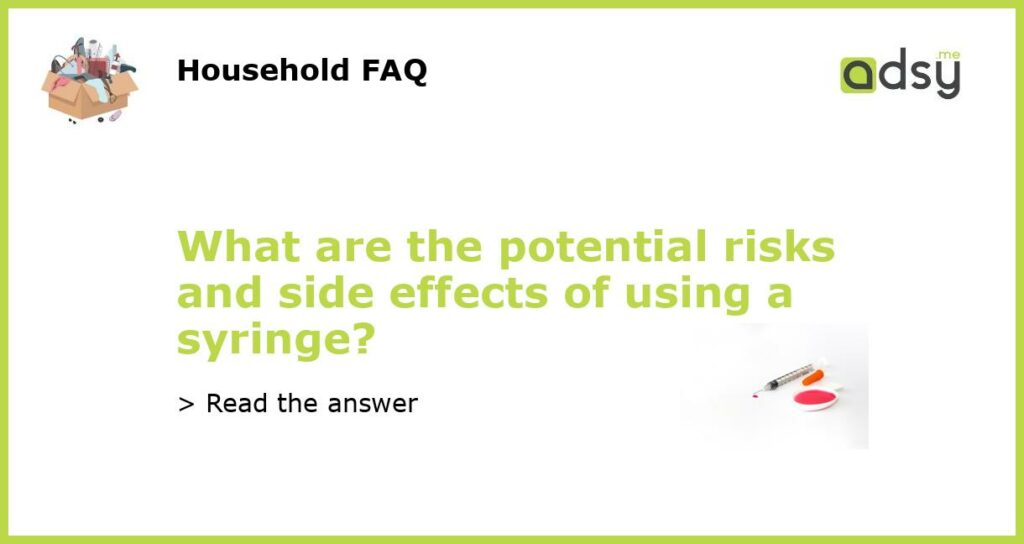Potential Risks and Side Effects of Using a Syringe
Using a syringe is a common medical practice for administering medication, vaccinations, or drawing blood. While it is generally safe, there are potential risks and side effects associated with its use. It is important to understand these risks to ensure safe and effective usage of syringes. This article discusses the potential risks and side effects of using a syringe.
Infection
Infections are one of the primary risks associated with using a syringe. If proper sterilization techniques are not followed, bacteria or viruses may contaminate the syringe, leading to infections. This risk is particularly high in settings where syringes are reused or when injections are performed by untrained individuals. Infection can cause localized or systemic symptoms such as redness, swelling, pain, fever, or even sepsis in severe cases. It is crucial to use sterile syringes and follow proper aseptic techniques to minimize the risk of infection.
Allergic Reactions
Some individuals may experience allergic reactions to the substances present in the syringe, such as latex or the medication being administered. Latex allergies can cause localized skin reactions, itching, hives, or in severe cases, anaphylaxis, a life-threatening allergic reaction. Allergy to medication can manifest as skin rash, difficulty breathing, or swelling of the face, lips, or tongue. It is essential for healthcare professionals to be aware of patients’ allergies and use alternative materials or medications when necessary.
Accidental Needle Stick Injuries
Accidental needle stick injuries pose a risk not only to patients but also to healthcare workers. These injuries occur when a needle punctures the skin unintentionally, exposing individuals to the risk of infection or transmission of bloodborne pathogens. Needle stick injuries can occur during injections or when disposing of used syringes. Healthcare professionals must follow proper disposal techniques and take precautions to prevent accidental needle stick injuries.
Damage to Surrounding Tissues or Organs
Improper use of a syringe, such as incorrect needle insertion or excessive force, can lead to damage to surrounding tissues or organs. This can result in pain, bleeding, bruising, or in severe cases, organ perforation. Care must be taken when administering injections to ensure proper technique and minimize the risk of tissue or organ damage.
Psychological Impact
For some individuals, the use of syringes may cause psychological distress or anxiety. This can be particularly true for individuals with a fear of needles or those who have had negative experiences associated with syringe usage in the past. Fear or anxiety can lead to increased stress levels and can potentially affect the patient’s compliance with necessary medical procedures. Healthcare professionals should be aware of patients’ psychological needs and provide the appropriate support and reassurance when using syringes.






